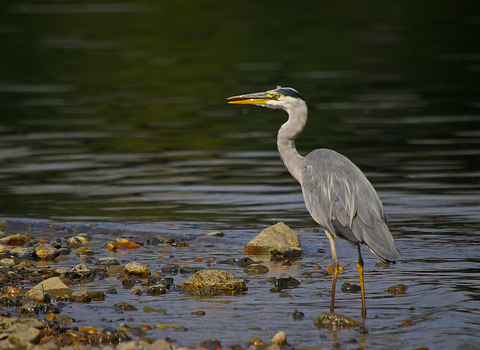
Grey heron © Neil Aldridge
Grey heron
Spot these tall, prehistoric looking birds standing like a statue on the edge of ponds and lakes, contemplating their next meal.
Scientific name
Ardea cinereaWhen to see
January to DecemberSpecies information
Category
Statistics
Length: 94cmWingspan: 1.8m
Weight: 1.5kg
Average lifespan: 5 years
Common. Classified in the UK as Green under the Birds of Conservation Concern 5: the Red List for Birds (2021).
About
Herons are often seen standing as still as a statue on their long thin legs in shallow waters of ponds and lakes patiently waiting for their next meal to swim by. These tall birds spend most of their time alone feeding mainly on fish but can be tempted by the occasional tasty mole! When feeling particularly lazy the heron will visit gardens with ponds for a quick and easy snack. Make sure you look out for these incredible birds in flight, their slow-flapping wings and long legs held out behind make them hard to miss!How to identify
The heron is an easily recognised, grey-backed bird, with long legs, a long, white neck, bright yellow bill and a black eyestripe that continues as long, drooping feathers down the neck. Flies with its long legs stretched out, but its neck pulled in.Distribution
Found throughout town and countryside, on canals, ponds, lakes and rivers across the UK.In our area
Join today
Join thousands of members who are already protecting Cumbria's wildlife & wild places. More about membership
Did you know?
Herons nest in colonies called 'Heronries', often in the top of trees. Here, they make their large, ungainly nests out of twigs and lay 3-4 eggs. The young will fledge from the nest after about one and half months.Watch
Grey heron (https://vimeo.com/642753727)
Tom Hibbert
Join today
Join thousands of members who are already protecting Cumbria's wildlife & wild places. More about membership
